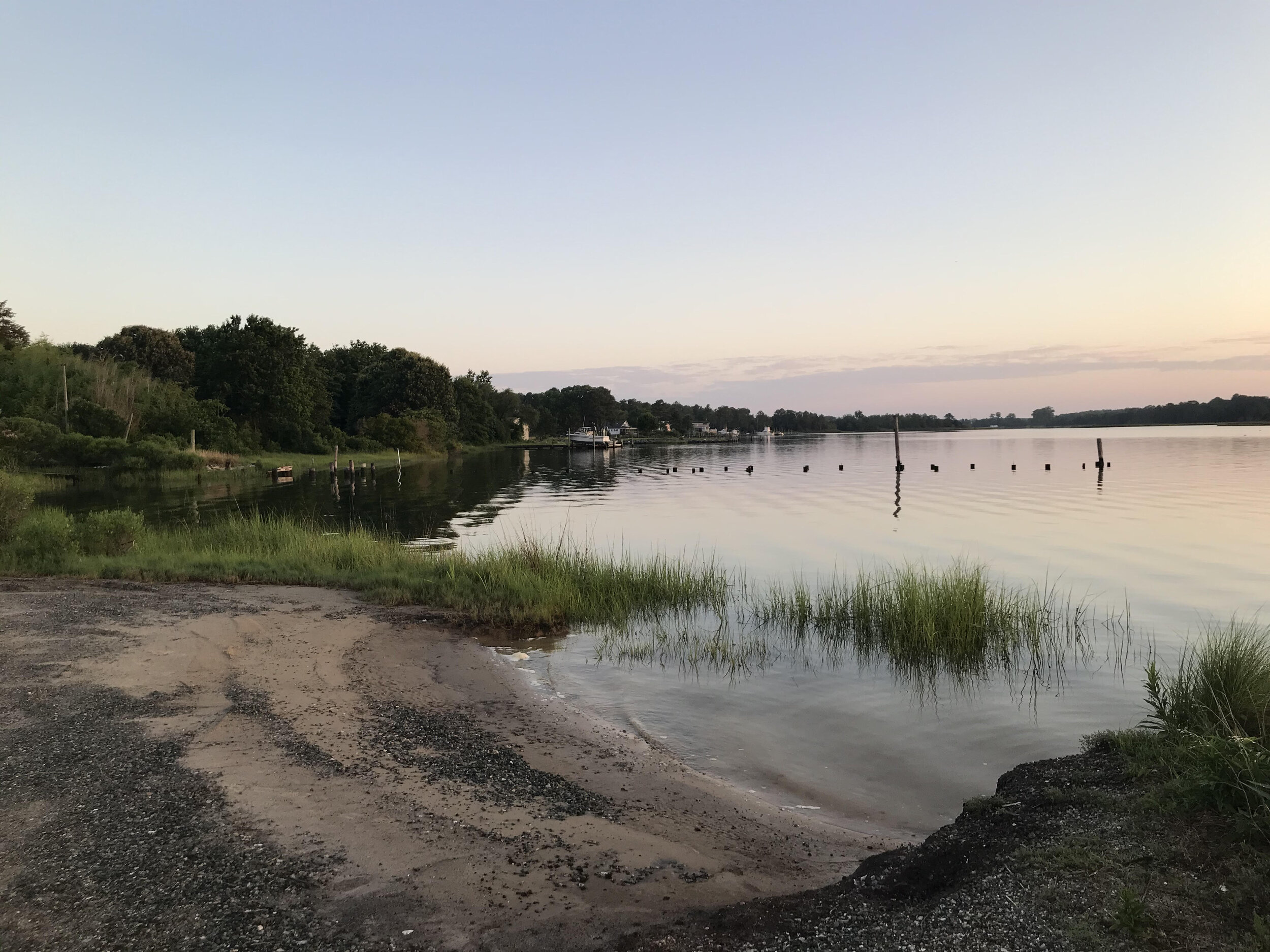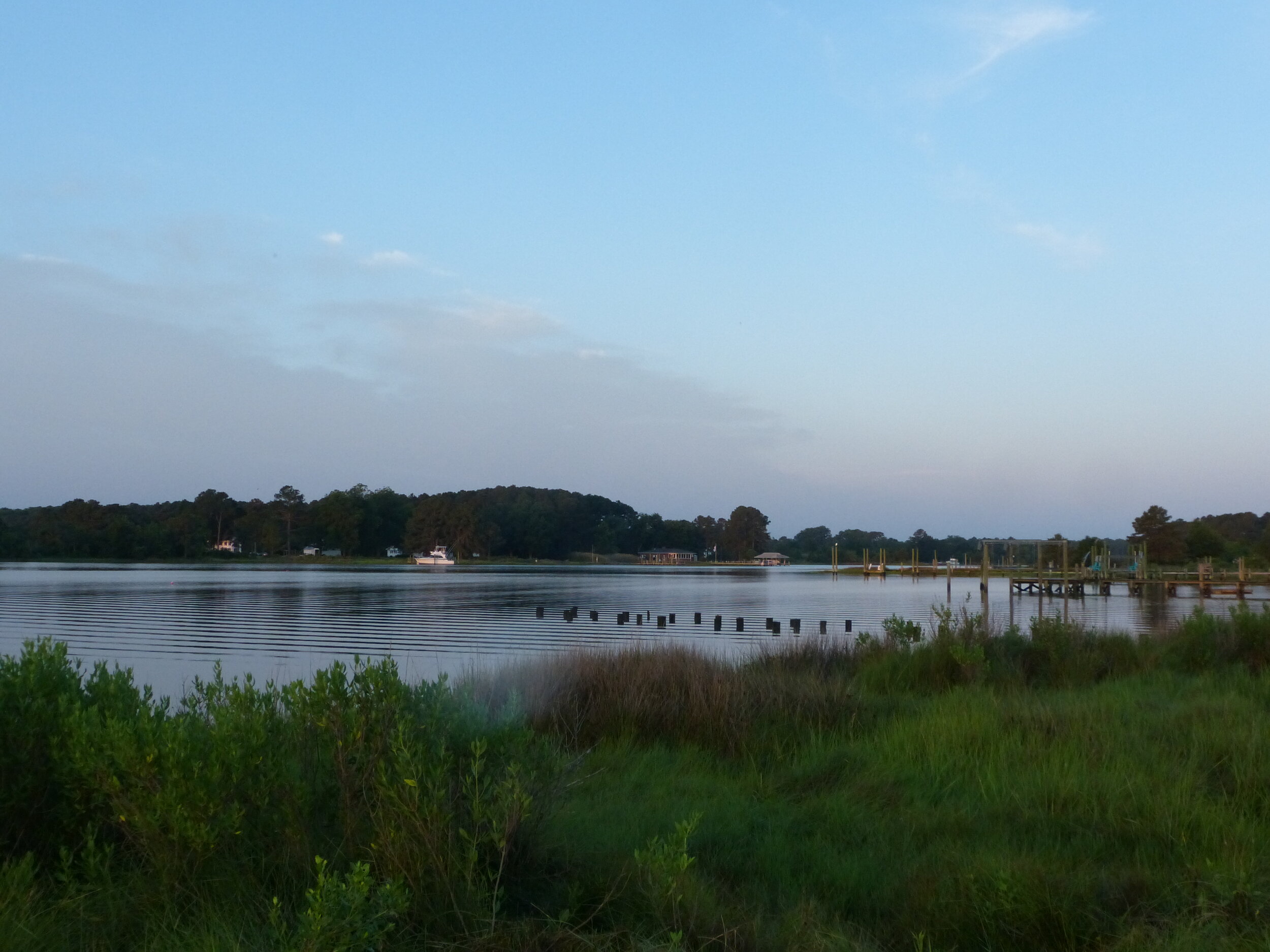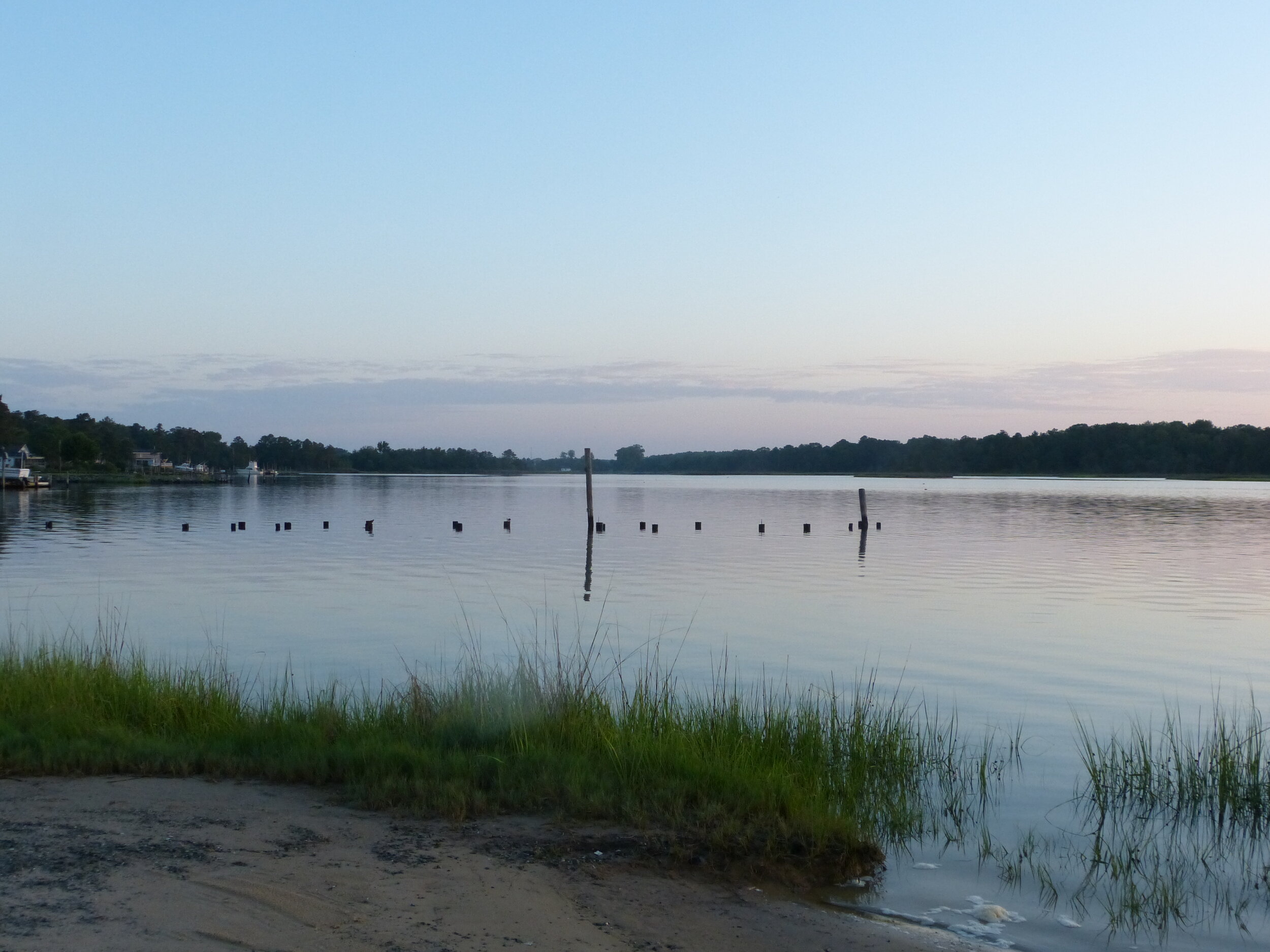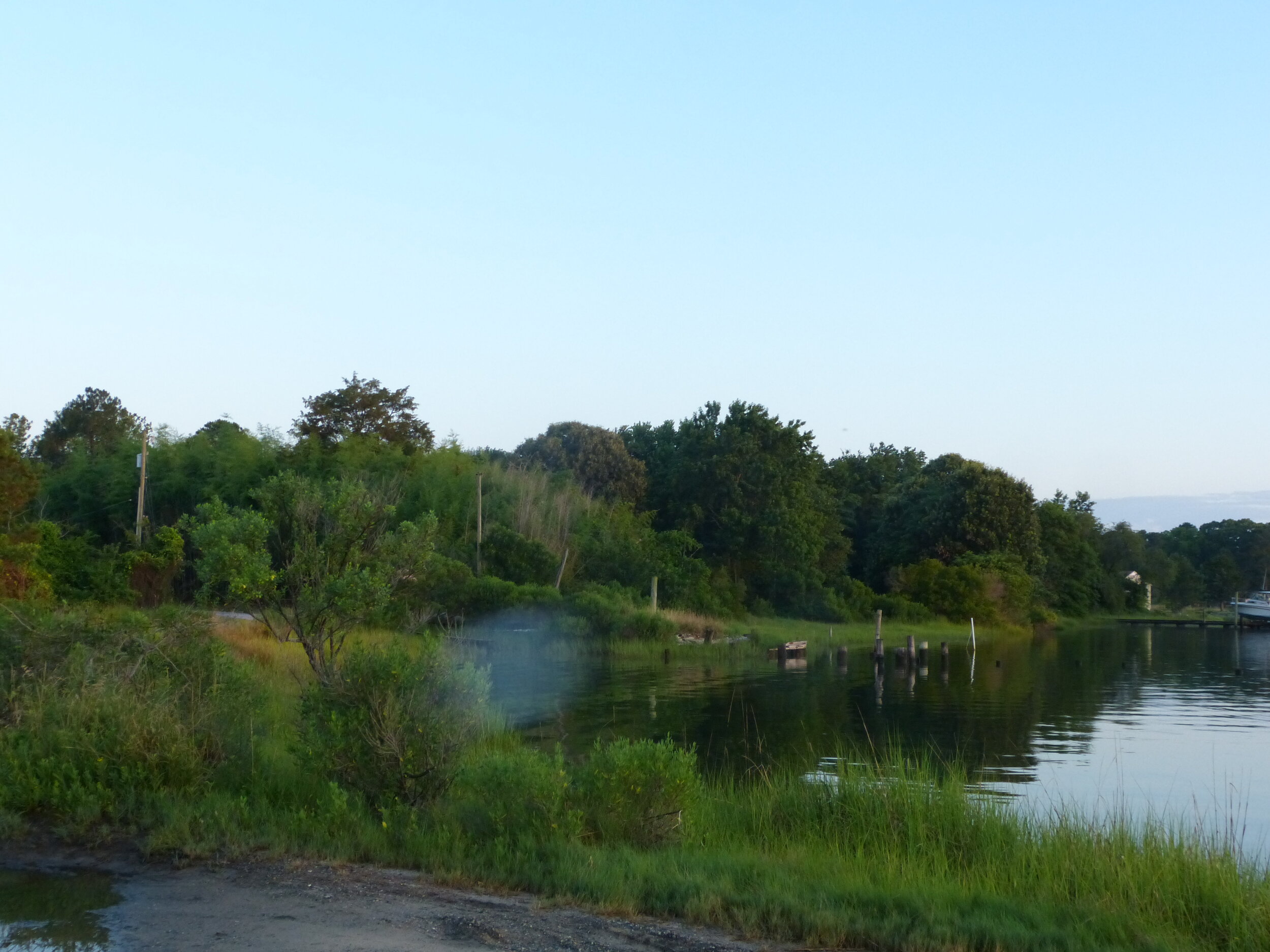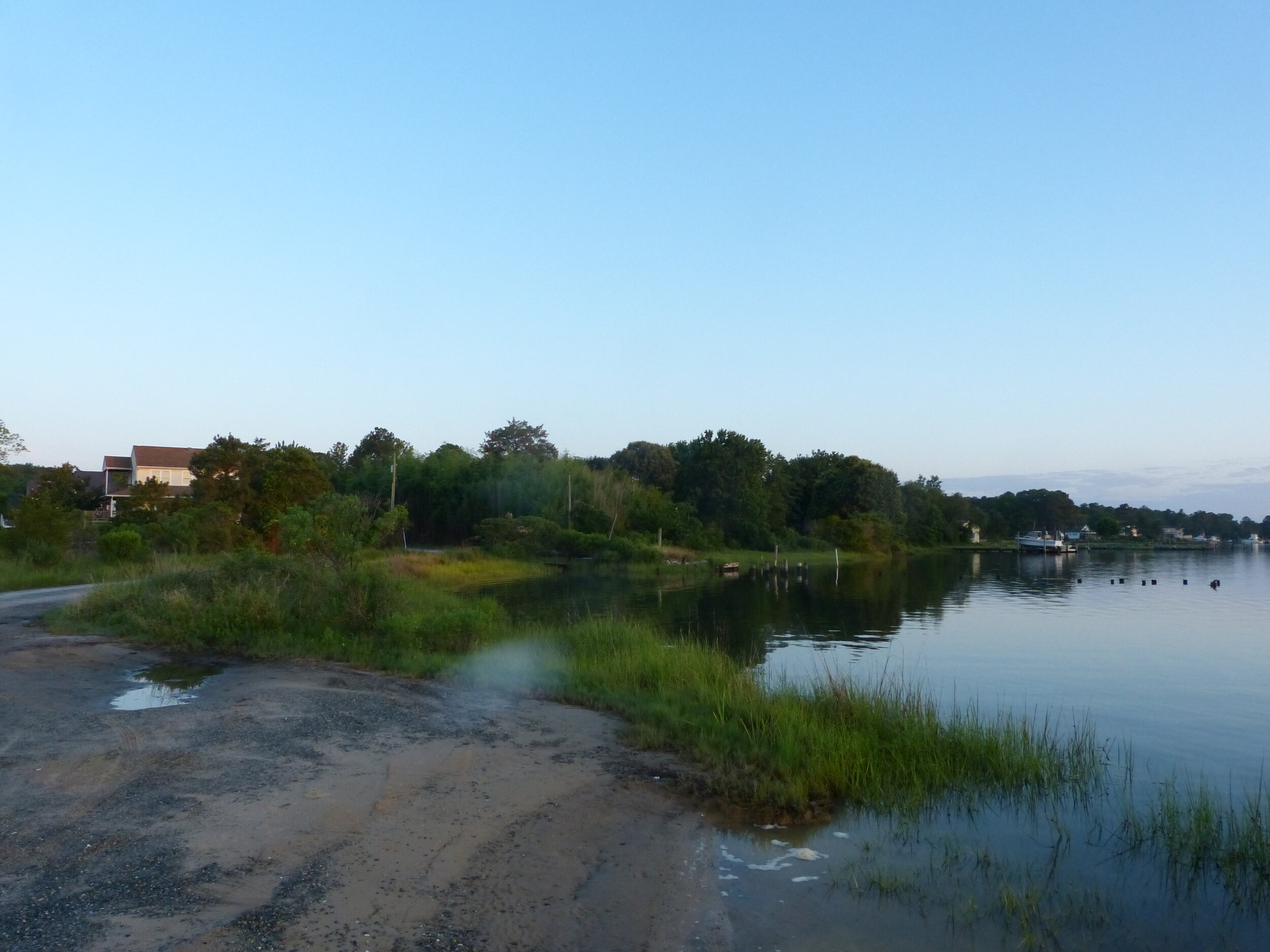Absent access to a boat, the ephemerally flooded fields at the west end of Ditch Bank Road have recently been the most productive location in Gloucester County to find shorebirds, with a list highlighted by White-rumped Sandpiper and Wilson’s Phalarope that now boasts 13 species. The best location to park is a small gravel pull-off along Ditch Bank approximately a quarter mile from its intersection with Maryus Road. Please do not walk off the road into the fields. Viewing the fields here can be tricky since a slight rise in the middle of the field (often planted with soybeans) obscures some of the closer exposed mud habitat. The best way to improve viewing here is to gain height; if you own a pick up truck this would be an excellent situation to set up a scope in the bed, or if you are bold and a little bit foolhardy (like the author), climb on the roof of your car. If your vehicle isn’t of help, standing in the middle of the road at the apex of the pavement is both feasible and helpful on this oft-traveled road. An alternative vantage point for viewing the exposed mud is from Perrin Creek Road, but there aren’t any good pull-offs and the shorebirds are typically more distant so it often isn’t worth more than a quick driveby. While there is still much more to learn about this site, there are indications that shorebird numbers are at their highest during high tide. There has been almost no birding done here during mid-summer or winter, but there is no reason to think that interesting shorebirds, puddle ducks, or waders couldn’t be found here during these seasons.
Further east, Ditch Bank Road runs along a stretch of tidal saltmarsh. This area has so far produced Saltmarsh Sparrow (during an extreme high tide event) and Clapper Rail, but seems to have the potential to host other species typical of this habitat like Sora, Sedge Wren, and Nelson’s Sparrow during the proper season.
eBird Hotspot: Ditch Bank Road
—Nick Newberry

